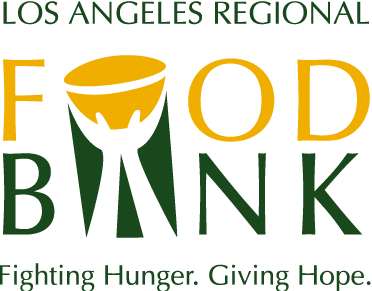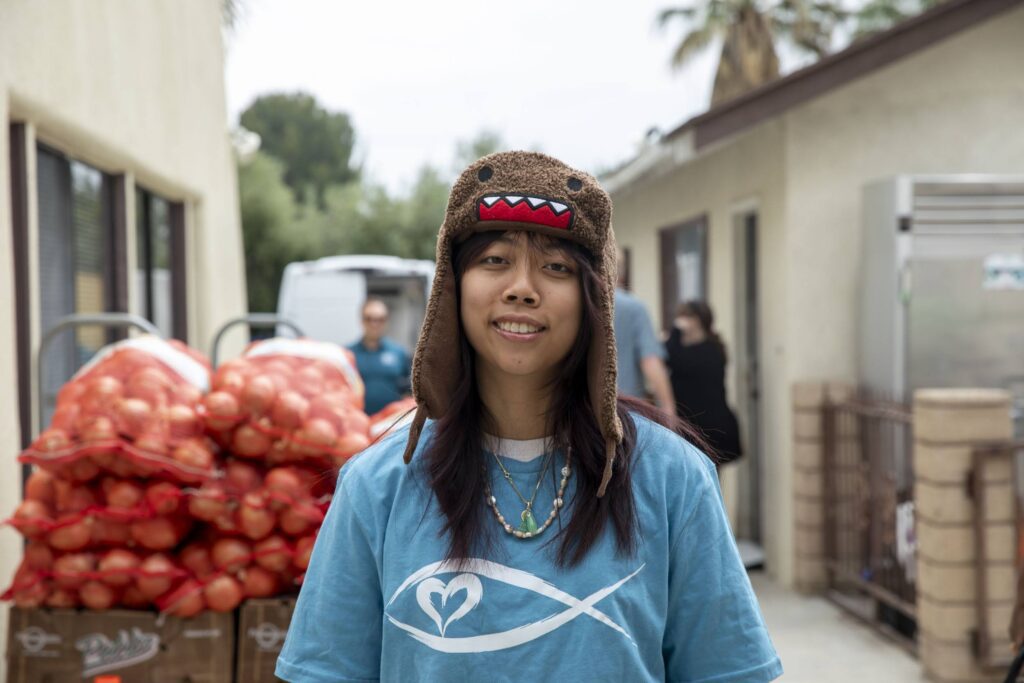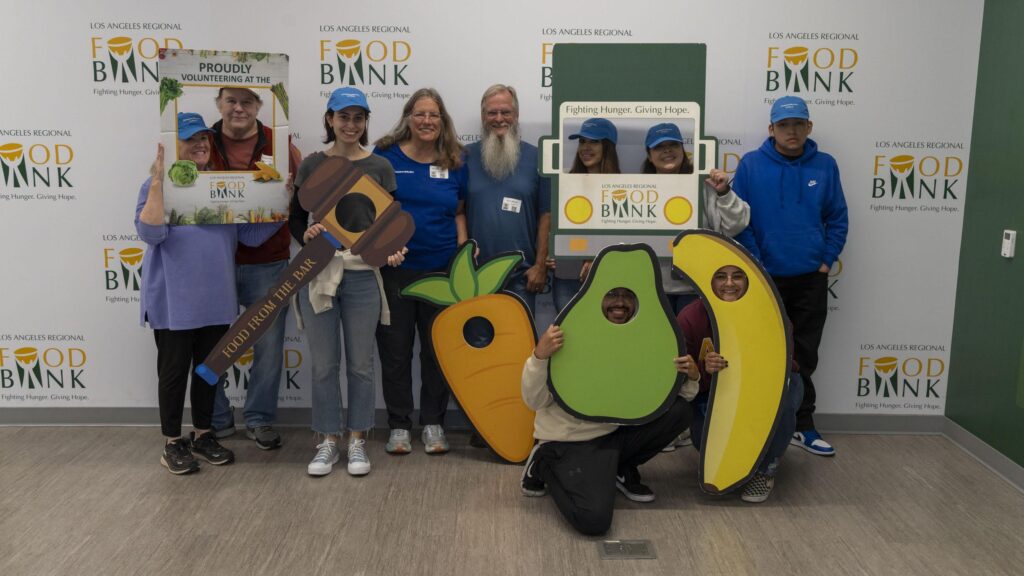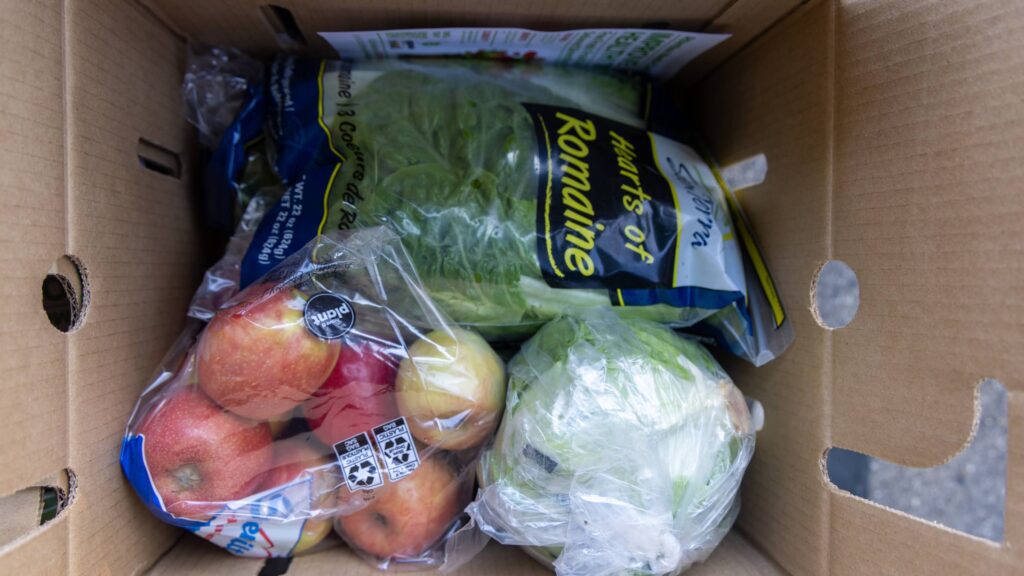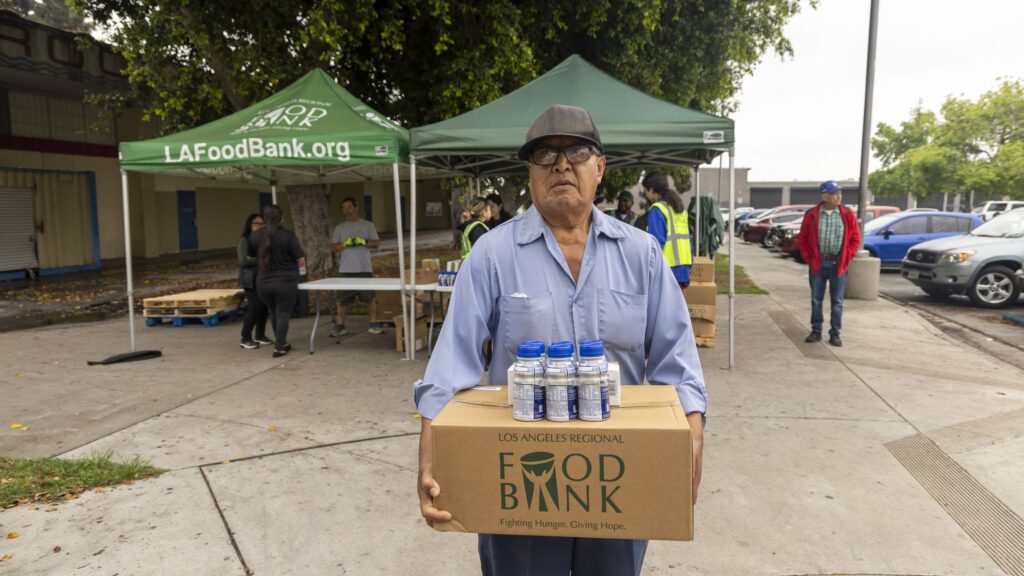Where Does the Food From the Food Bank Come From?
Where Does the Food From the Food Bank Come From?
In 2020 alone, the Los Angeles Regional Food Bank went from serving 300,000 individuals each month to 900,000 clients each month. There were many people who found themselves searching for food assistance for the very first time. The thought of seeking food assistance hadn’t crossed their minds before the pandemic.
The Los Angeles Regional Food Bank has been providing food assistance since 1973, so when the pandemic hit, the Food Bank had already established positive relationships and partnerships with hundreds of manufacturers, distributors, grocery retailers, organizations and foundations throughout Los Angeles County, which helped the Food Bank serve the broadened list of food-insecure individuals and families.
Millions benefited from the more than 450 drive-through food distributions that the Food Bank hosted throughout the County, but the majority of the food, just as before the pandemic, was distributed through the Food Bank’s ~700 partner agencies. Working together, 174 million pounds of food, the equivalent of 143 million meals, were distributed.
Where does the Food Bank get Food and Grocery Products?
While there is a percentage of food that comes from the United States Department of Agriculture (USDA), the Food Bank counts on several partners and sources for its food acquisition, including:
- Grocery retailers: Albertsons, Aldi, Big Lots, Costco, Food 4 Less, Pavilions, Ralph’s, Restaurant Depot, Sam’s Club, Smart and Final, Sprouts, Target, Trader Joe’s, Vons, Walmart and more.Grocery stores like those listed above help the Food Bank fight food waste, and at the same time, provide food to food-insecure individuals, by providing perfectly good food that is nearing its expiration date. Food provided by grocery retailers then goes out to the Partner Agency Network as part of the Extra Helpings Program. Learn more about this program here.
- Manufacturers & distributors: American Bounty, CalFoods Logistics, Bimbo Bakeries USA, General Mills, Smithfield – Farmer John, Sysco, U.S. Foods, Vesta Food Service, Worldwide Produce and others.All Food Bank manufacturers and distributing partners are committed to ensuring that our food manufacturing and product handling requirements are met and/or exceeded. Food items are stored and refrigerated to follow food safety guidelines, before and upon arrival at the Food Bank.
- Wholesalers and brokers: The Food Bank works with wholesalers and brokers like Perfect Pact, Professional Produce, Sunrise Produce (to name a few) to obtain products at the best price available, helping maximize the amount of food received that will help more of those in need.
- Local growers and packers: Bumble Bee Foods, LLC, Charlie’s Produce, Chelan Fresh. Choice Produce, Don Lee Farms, Flower Foods, Hidden Villa, Imperfect Foods, PanAmerican Farms, RJB Produce, Starr Ranch, SunTerra
- School Districts: Los Angeles Unified School District (LAUSD)
Product acquisition has changed over the years, as have the items needed by Food Bank beneficiaries. For the last 20 years, the Food Bank has put an emphasis on acquiring food that is rated as nutritious, or highly nutritious. In 2020, more than 90% of the food distributed was rated as nutritious, including 40% with high nutritional content.
Where does the Food go From There?
Before the Food Bank accepts or requests a food donation, the Product Acquisition Department gets in touch with the Agency Relations Department who determines whether the food item is wanted or needed amongst clients in any agency or direct service program, as well as the amount.
Once the information is gathered, the Product Acquisition Department communicates with the Inventory Control Department to determine whether there is space available, and the amount of time it will take to process the items and make them available to the agencies and direct service programs. Agencies and programs can then order product and schedule pick-up or delivery.
All donations are received into the Food Bank’s inventory system and stored in freezers, coolers or dry storage at the Los Angeles Headquarters or Commerce facility. As part of our Building Hope Campaign, the Food Bank is renovating a 256,000 square foot warehouse in the City of Industry to host more food and reach more food-insecure residents. Learn more about the Building Hope Campaign.
In order to stay on as a Partner Agency or direct service program, all agencies must prove that they maintain perishable and nonperishable items properly stored and up-to-par with food safety regulations.
Get an Inside Look
The Food Bank’s Chief Development Officer Roger Castle recently hosted a live tour of the Los Angeles Headquarters on Facebook. If you would like to take an in-person tour of the Food Bank, please schedule a tour. Otherwise, please watch the video below and get a behind-the-scenes look at the Food Bank’s day-to-day operations.
Since its inception up to 2021, the Food Bank has distributed 1.85 billion pounds of food. The Food Bank relies on the generosity of the community to strengthen its programs and maximize its reach, so if you are in a position to donate, please do. The Los Angeles Regional Food Bank is a highly efficient charity, and just $25 provides the equivalent of 100 meals. Together, #WeFeedLA.

